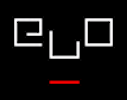Your cart is currently empty!
ELO
-
New E-Lit Creative Writing Fellowship Offered at Brown
Robert Coover writes: When the award-winning digital artist Talan Memmott went to the Graduate Program in Creative Writing at Brown University this fall as an MFA candidate in electronic writing,… Read more.
-
Review of Stephanie Strickland’s V in Publisher’s Weekly
The following is a quote from a review in Publisher’s Weekly: “If Brian Kim Stefans’s The Dreamlife of Letters (2000)-a gorgeous send-up of Freud, lettrism and contemporary gender-bending-was the first… Read more.
·
-
Violence Online Festival
Violence Online Festival is curated by Agricola de Cologne and seeks poetry works connected to the subject “Violence” to be included in Version 4.0 of Violence Online Festival. The deadline… Read more.
-
Cyberarts Database and Initiative Online
The Cyberarts Research Initiative from National University of Singapore presents aa visually engaging online cyberarts database. This is part of a larger University project which includes an artist-in-residence programme, research… Read more.
-
UCLA Daily Bruin Covers E-Lit Reading
The UCLA school paper ran a story on the electronic literature reading held on October 19 at Beyond Baroque in Los Angeles. M.D. Coverley and Stephanie Strickland read to a… Read more.
-
Virtual Attic Museum Online
Reiner Strasser and Regina Celia Pinto created a virtual attic for the Museum of the Essential and Beyond That, which is interested in digital art preservation. The spaceless gallery features… Read more.
-
New Work at Wordcircuits
About Time by Rob Swigart is an interactive multimedia novella in which two tales unfold 40,000 years apart with richly thought-provoking and entertaining results. And The Dancing Rhinoceri of Bangladesh… Read more.
-
New Beta Site for Resource Center for Cyberculture Studies
The Center for Cyberculture Studies has a new interface and a new database which will able to organize the existing content, especially the book reviews, in new ways. The redesign… Read more.
-
Article on Preserving Digital Art Appears in Wired
The article by Kendra Mayefield exposes what all artists in the digital realm already know: that “As the half-life of these media becomes shorter and shorter, variable media art is… Read more.
-
New Media Poetry Conference
“Aesthetics, Institutions, and Audiences” will focus on poetry composed for digital environments and exploring cross-disciplinary and cross-cultural accounts of this work. The aims: “to look at the possibilities for poetry… Read more.
·
